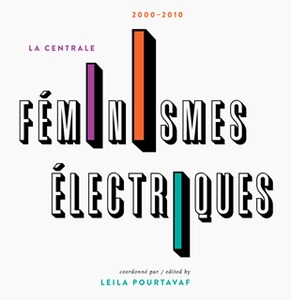GENDER ALARM!: Queer Feminist Exhibitions in a ‘Year of Feminist Art’
Reckitt, Helena. 2012. GENDER ALARM!: Queer Feminist Exhibitions in a ‘Year of Feminist Art’. In: Leila Pourtavaf, ed. Féminismes Électriques. Montreal: La Centrale Galerie Powerhouse, pp. 26-41. ISBN 978-2-89091-321-9 [Book Section]
This is the latest version of this item.
![[img]](https://research.gold.ac.uk/7617/1.hassmallThumbnailVersion/Fem%20Elec.png)
|
Image
Fem Elec.png Download (24kB) | Preview |
Abstract or Description
GENDER ALARM! was commissioned by La Centrale, Montreal’s first feminist artist-run art gallery, to mark their change in focus from that of women artists to those of any gender who address social and sexual power relations. Starting with the 2008 group exhibition GENDER ALARM!, which inaugurated this new mandate, the essay highlights that show’s open-ended, process-based, DIY aesthetics and its spirit of irreverence and glee. It relates GENDER ALARM! to two US exhibitions from 2006 that shared a similar spirit, as well as featuring some of the same artists: Ridykeulous, at Participant, Inc., New York, and Shared Women, at LACE, Los Angeles. All three exhibitions underscore the libidinal dimensions of collective feminist and queer activity. Less concerned with critiquing the status quo than with staging alternatives to it, these exhibitions are read as examples of what Lauren Berlant and Michael Werner term counterpublics. Non-normative forms of sexual activity, including polyamory, promiscuity, public and anonymous sex, are presented as metaphors for ways of relating to others, pooling resources, building communities, and making art. Many works in these exhibitions salute earlier eras of feminist art, especially that of a tactile, emotive and performative nature. They also hail earlier moments of feminist and gay activism. Such gestures are read in the light of Elizabeth Freeman’s concept of ‘temporal drag’. The attachment to seemingly discarded, devalued and outmoded attitudes and tropes points to the unfulfilled potential of earlier moments and movements. This evokes the desire for a queer feminist lineage that cuts across gender and sexual identification. This sense that earlier pioneering moments remain relevant and unfinished is reflected in these exhibitions’ grounding in processes of improvisation and DIY and in un-heroic artistic materials. By keeping feminism as a category in question, these exhibitions aim to question orthodoxies, including that of feminism.
|
Item Type: |
Book Section |
||||
| Additional Information: |
French translation of essay appears on pp 42 - 56 |
||||
| Departments, Centres and Research Units: |
|||||
| Dates: |
|
||||
| Item ID: |
7617 |
||||
| Date Deposited: |
20 Feb 2013 08:57 |
||||
| Last Modified: |
29 Apr 2020 15:47 |
||||
|
URI: |
Available Versions of this Item
-
GENDER ALARM: Queer Feminist Exhibitions in a ‘Year of Feminist Art’. (deposited 14 Jan 2013 10:58)
- GENDER ALARM!: Queer Feminist Exhibitions in a ‘Year of Feminist Art’. (deposited 20 Feb 2013 08:57) [Currently Displayed]
View statistics for this item...
 |
Edit Record (login required) |

 Tools
Tools Tools
Tools
